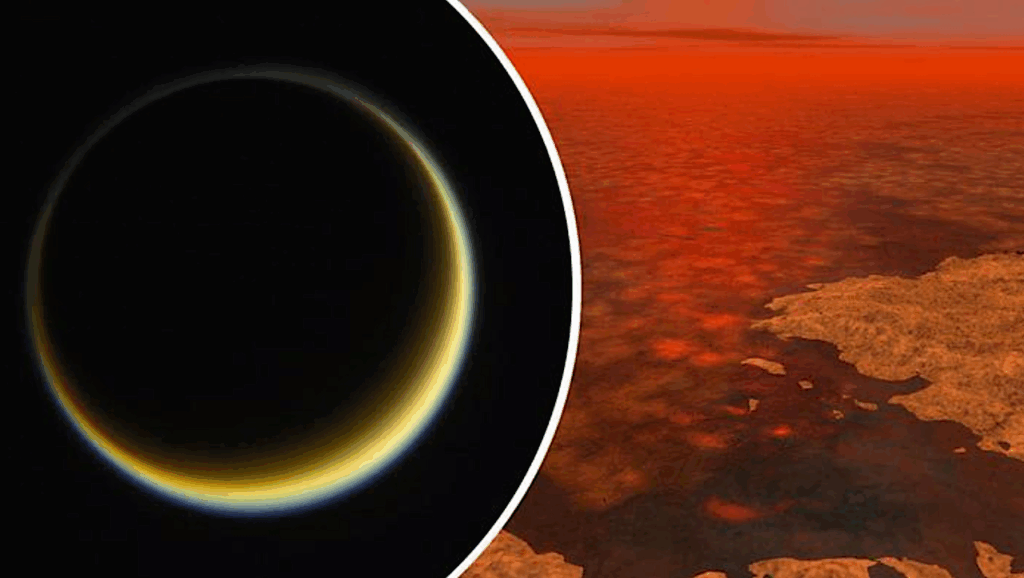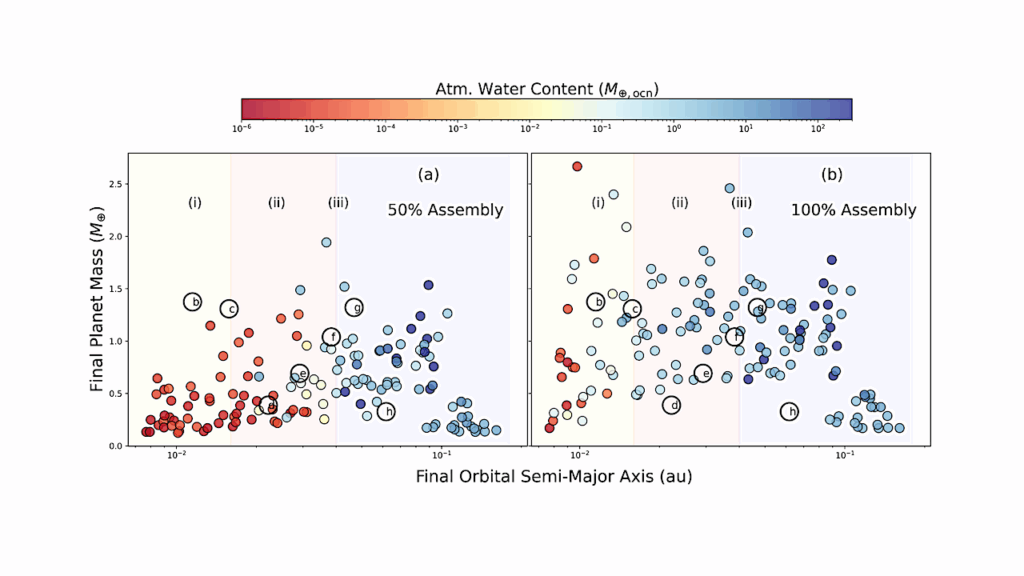Water Condensation Zones Around Main Sequence Stars

Understanding the set of conditions that allow rocky planets to have liquid water on their surface — in the form of lakes, seas or oceans — is a major scientific step to determine the fraction of planets potentially suitable for the emergence and development of life as we know it on Earth.
This effort is also necessary to define and refine the so-called “Habitable Zone” (HZ) in order to guide the search for exoplanets likely to harbor remotely detectable life forms. Until now, most numerical climate studies on this topic have focused on the conditions necessary to maintain oceans, but not to form them in the first place. Here we use the three-dimensional Generic Planetary Climate Model (PCM), historically known as the LMD Generic Global Climate Model (GCM), to simulate water-dominated planetary atmospheres around different types of Main-Sequence stars.
The simulations are designed to reproduce the conditions of early ocean formation on rocky planets due to the condensation of the primordial water reservoir at the end of the magma ocean phase. We show that the incoming stellar radiation (ISR) required to form oceans by condensation is always drastically lower than that required to vaporize oceans. We introduce a Water Condensation Limit, which lies at significantly lower ISR than the inner edge of the HZ calculated with three-dimensional numerical climate simulations. This difference is due to a behavior change of water clouds, from low-altitude dayside convective clouds to high-altitude nightside stratospheric clouds.
Finally, we calculated transit spectra, emission spectra and thermal phase curves of TRAPPIST-1b, c and d with H2O-rich atmospheres, and compared them to CO2 atmospheres and bare rock simulations. We show using these observables that JWST has the capability to probe steam atmospheres on low-mass planets, and could possibly test the existence of nightside water clouds.
Martin Turbet, Thomas J. Fauchez, Jeremy Leconte, Emeline Bolmont, Guillaume Chaverot, Francois Forget, Ehouarn Millour, Franck Selsis, Benjamin Charnay, Elsa Ducrot, Michaël Gillon, Alice Maurel, Geronimo L. Villanueva
Comments: Accepted for publication in Astronomy & Astrophysics
Subjects: Earth and Planetary Astrophysics (astro-ph.EP); Atmospheric and Oceanic Physics (physics.ao-ph); Geophysics (physics.geo-ph)
Cite as: arXiv:2308.15110 [astro-ph.EP] (or arXiv:2308.15110v1 [astro-ph.EP] for this version)
Submission history
From: Martin Turbet
[v1] Tue, 29 Aug 2023 08:23:07 UTC (28,152 KB)
https://arxiv.org/abs/2308.15110
Astrobiology,








